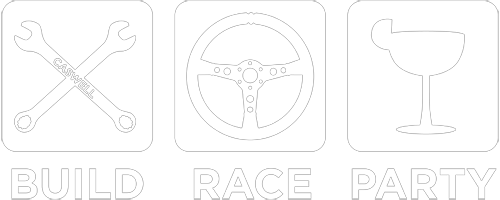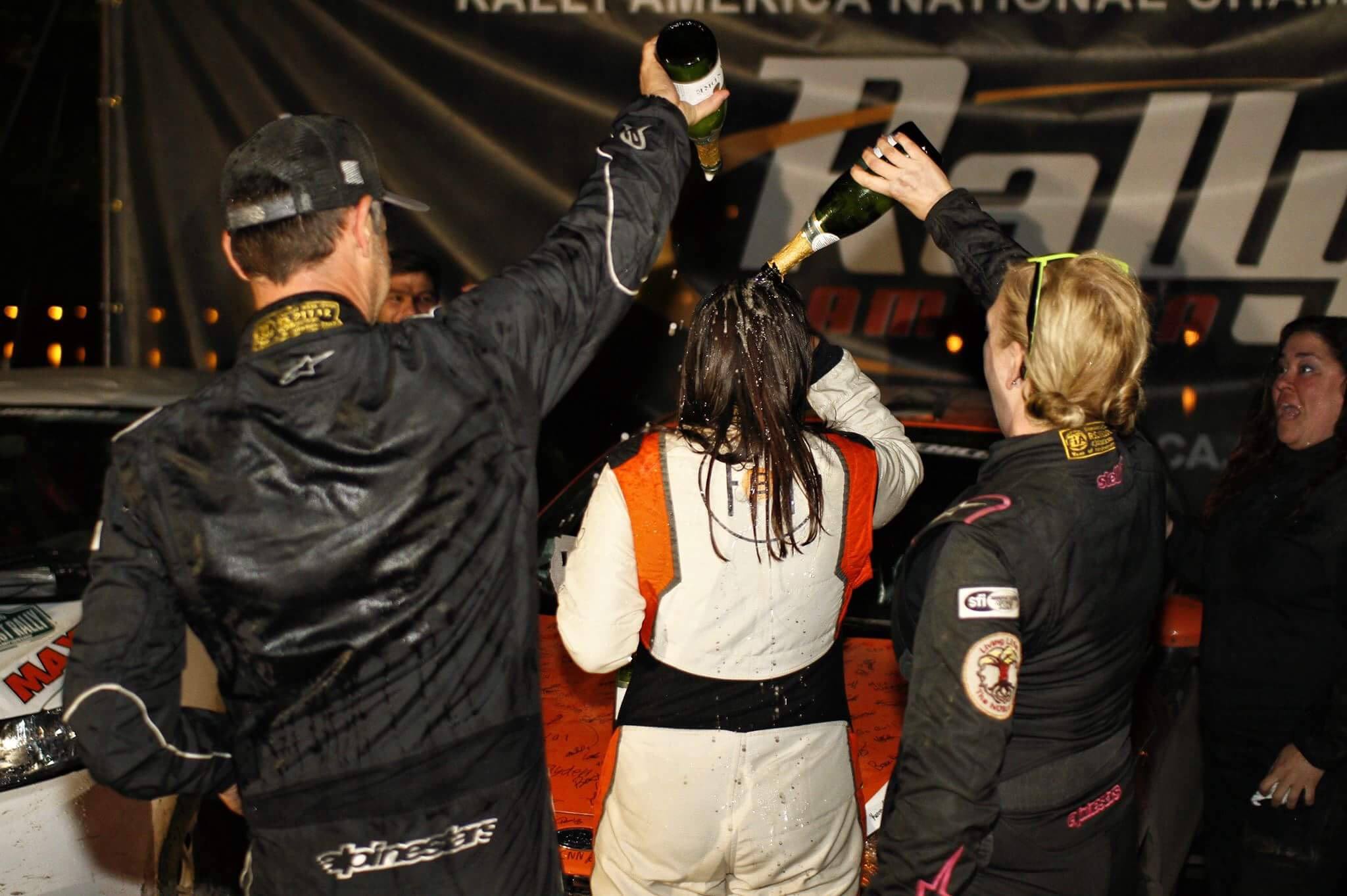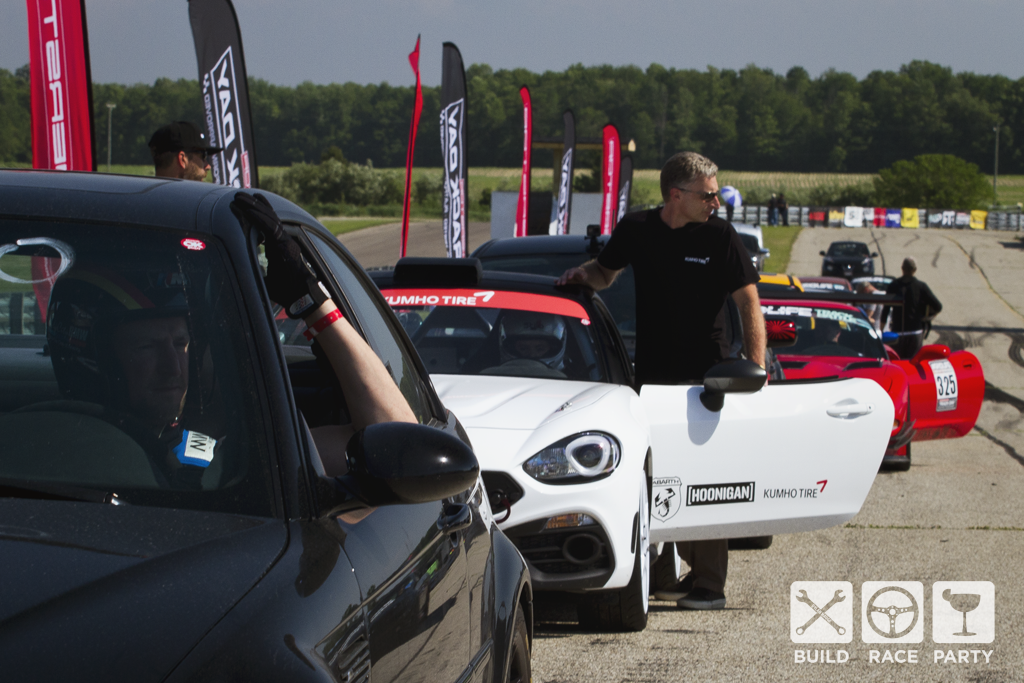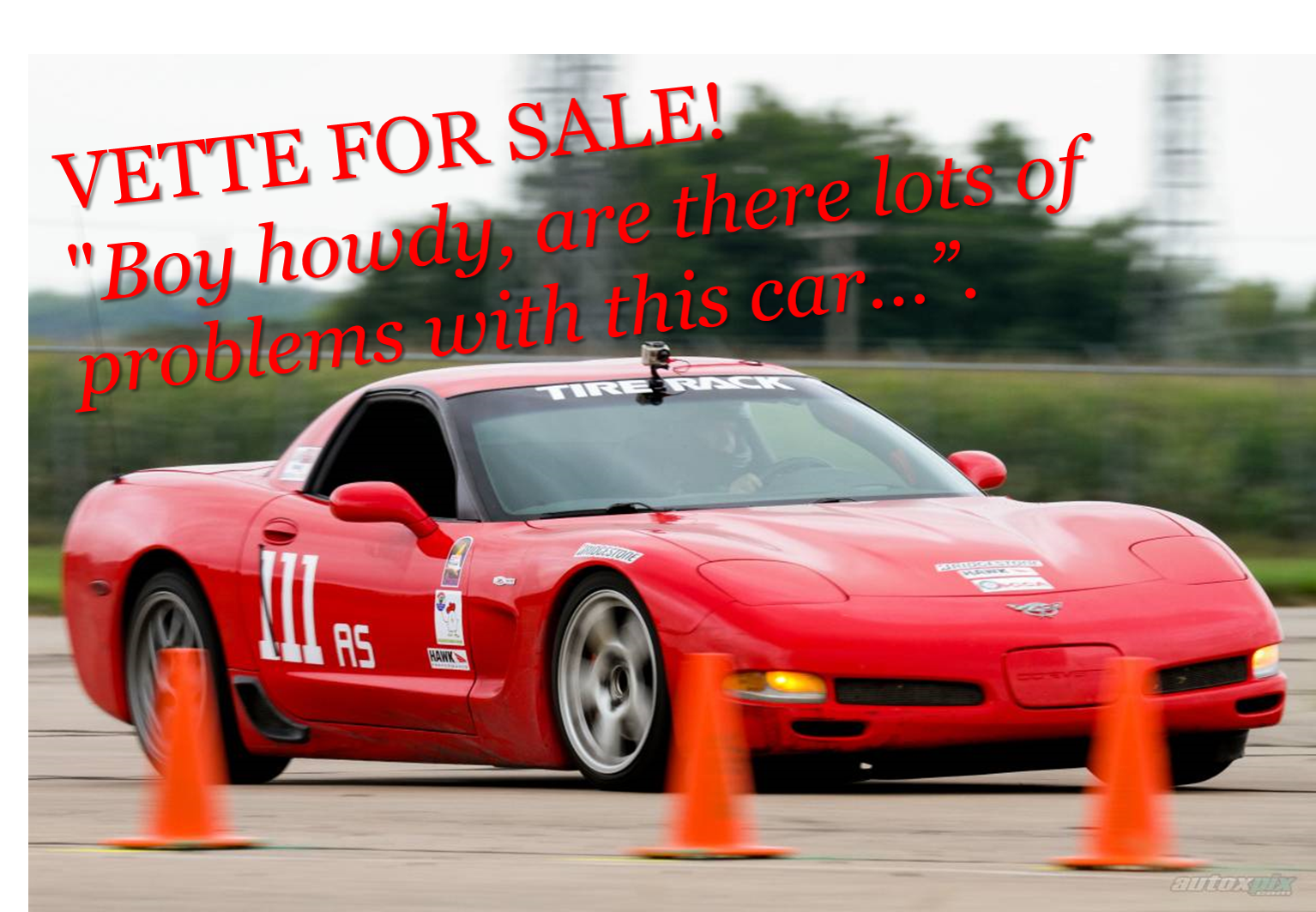WORDS AND PICTURES BY ALEX KIHURANI
See, if you’re not sitting alongside Ken Block, David Higgins, or Antoine L’Estage, rallying in the US isn’t all that competitive, and usually (outside of those three), you’re going to finish where your driver’s skill and car places them, given that you’re a competent navigator and don’t make big mistakes. Call every note a tad too early and cost a few tenths of a second every few corners? No difference. Scared about how to note the line through that nasty kick in the middle of a blind crest on a windy, narrow piece of road? You can just go slowly through it because it won’t make a difference. Of course, as the navigator, you need to have the sense to identify that nasty bit of road in the first place, but you won’t need to figure out how on earth you could take it flat and still get away with it. You don’t need to push yourself that far.
Last year at the 100 Acre Wood Rally, one of the most competitive events in the US and the one event Ken Block creates a big buzz about every year, we (Joseph Burke and myself) finished 2nd behind David Higgins in the factory Subaru with our privately entered Mitsubishi. However, we were over 8 minutes behind by the end of it, and 3rd place was another 3 minutes behind us. The engine even developed a misfire under boost that cost us close to 100hp on the final day, but it really didn’t matter. The only pressure anyone was under was not to put it off the road. This was the position Joseph Burke and I found ourselves in most of the time, driving our own rally, for years.
After over 10 years of rallying in the US, I got pretty good at knowing how to be sensible, so in short, it was time for a new challenge. The pace and the insanely small margins while competing in the WRC Academy at Rally Finland 2012 demonstrated to me that everything really DID matter, and when you get 30 seconds taken off of you on a tricky stage you thought you were being sensibly quick, well then, you feel as though you need to find where all that time went.
However, in reality, the motivation is much more deeply rooted. I always wanted to move over here and pursue my rally dreams. I’ve been the biggest fan of rallying for my entire life. It’s all I’ve wanted to do since before I could remember, and that’s with vivid memories of being fascinated by Vatanen’s 1988 run up Pikes Peak at the age of two. The problem is, the last time a World Rally Championship event was held in the US, I was one year old. I’m 27 now.
Being so far away from the rallying mainstream, my only realistic dreams growing up were to just *see* my heroes compete. Even back then, I would need to fly over here to witness them execute a perfect handbrake turn. Through spending my early teenage years hitching rides with rally teams to get to events across the US, to having a serious go at rally co-driving starting 3 weeks after my 16th birthday, I finally managed to swing a semester at the University of Manchester during my last year at university, competing in some MSA National A & B events and spectating my first WRC event, Wales Rally GB 2008. It was awesome competing in events with 150 cars on stages that I had studied on VHS tapes for the majority of my life. I felt like a tourist from the navigator’s seat and knew I needed to come back someday.
But at the time, I was doing so well (even compared to my British co-driving peers) that I made no serious plans. At 21 years of age, I had just come off a stint on the most established team in the US, Subaru Rally Team USA, running alongside the very famous BMX rider Dave Mirra, where we capped off our season with a Bronze medal at X Games 14 on live TV in front of millions of television viewers and all my friends and family. My per diems and prize money financed my travels through Europe that semester. At the time, it seemed fairly reasonable that I could follow a similar path to Alex Gelsomino or Christian Edstrom just a few years before me, and make a comfortable, all-expense paid, transition to the WRC without having to move away from home or bust my ass at a serious full-time job whilst co-driving competitively.

I couldn’t have been more wrong!
Instead, my WRC debut came 4 years later in the midst of one our great hopes in US rallying, Chris Duplessis, going bankrupt. I didn’t find my way into the co-driver seat until the money was all gone, but it’s times like these when having some real business and consulting experience, as well as some savings, over the past 4 years REALLY pays off. All I had to do was figure out how to raise $20,000 in 6 days and utilize some of that good credit I had, and the Rally Finland opportunity was mine. I also needed to teach myself how to be a competent navigator at that level, complete WRC levels of organizational work, suss out a plan for Chris to be competitive, and work my day job in an industry and a client infamous for burning people out. Clearly, when I was 21, this was not what I had in mind for my WRC debut..because it was SO much better. While it was much more exhausting, it was also so much more rewarding. It was so much more gratifying for my personal relationships with my driver and the US rally community; and it was even all put into a beautifully shot documentary (called Easier Said Than Done – shameless plug). I wouldn’t have had it any other way.
But once I came down from my Rally Finland high, it was irrefutably clear that there would be no opportunities to compete at that level of international rallying again if I stuck around in the US and waited for something to happen. Sure, someone with a lot of money might want to enter a WRC event in a check-off-the-bucket-list kind of way sometime in the future, but I didn’t spend my whole life dreaming of rallying just to do that. I’m a competitor that loves this sport, so I genuinely want to be in the mix. I want to continue to progress.
It was clear to me that I had to take the more extreme route and just move to Europe indefinitely to have any reasonable chance of getting back to that level. To do that, however, I needed to be financially sustainable in the long-term, so I applied for a position within the same firm I worked for in the US, but out of the London office. Importantly, the position was much more in line with what I wanted to do in my day job career, as well as a much better opportunity compared to what I was doing back home. I no longer have any false pretence to believe that one day, I can just rally without being concerned about working. The career is critical for me, not merely in the sense of a fall-back option, but to continue to progress with my organization, time-management, professionalism, and marketing – experiences that are so crucial for a co-driver to have when competing at the highest of levels, and competencies that you won’t master unless you get experience day in and day out. While the demands on my time between work and rallying inevitably clash, the relationship is more mutually dependent than one might think. It has made me a much better co-driver (and vice-versa).
I arrived 1October 2013 not expecting to do much with regards to rallying until 2014. Fortunately, Jamie Edwards, one of the navigators that helped me get started when I was in Manchester 5 years ago, asked me to sit with one of the Pirelli Star Drivers, Alex Parpottas, for the last round of the BRC. It was just two weeks after my arrival. Jamie had been co-driving for Alex and doing very well recently but was having family and work commitments that made doing the BRC a bit too difficult. If we got on well, Jamie said that I could keep the seat.
We did. On the Sunseeker, we were a comfortable 3rd in BRC2 and narrowly missed out on catching the BRC2 champion Daniel McKenna, climbing within 1.3 seconds before overshooting a junction on the last stage. Still, with no practice or shakedown before the event between us, it was the better than we could have hoped for. I’ve only co-driven for Alex since then.
I really enjoyed my first experience competing in a BRC event. It felt a lot like running the WRC Academy to be honest. The cars were the same, many of the drivers were the same, and surprisingly, the average age was about the same too. The competition was therefore extremely tight, with less than 2 seconds frequently being the difference between winning the stage and being off the podium, and the pace those boys were running was truly world class. I hadn’t experienced competition like that since WRC Finland; yet it was still fairly reasonable for the working man. I left work a bit early on Thursday, got on a train for two hours to get to the event, and was back partying in London Saturday night after the rally was done. It was about 80% of the competition compared to the WRC Academy at Rally Finland with about 5% of the hassle.
Originally, my plan was to come to the UK, network and get as much BTRDA experience as I possibly could, and hopefully in a year or two, I would gain enough acceptance to be picked up for a competitive BRC ride. Somehow, my original goal was fulfilled within my first two weeks by competing in Rallye Sunseeker. I was genuinely surprised, being from America, that no one seemed sceptical of my competence. It seemed more straight-forward than being back home.
Given that Alex finished third in BRC2, the category from which the majority of Pirelli Star Driver nominees are chosen, whilst being the highest placed Brit, I figured 2014 would be a proper attack on the championship/the Pirelli Star Driver prize. However, we learned that the proposed nomination requirements changed to allow only a single nominee in each category from BRC1 through BRC5. This meant our best shot at the Pirelli Star Driver nomination would be to take a step down in the BRC. At the same time, we stumbled across a press release for the Junior ERC championship, which offered 1,000Euro fixed entry fees, 5-15 minutes of guaranteed Europsport TV time per event, a depth of international R2 competition, and a fully supported R5 drive for the winner. Best four events out of seven counted, which meant we could start in April with Circuit of Ireland for close to the same price as the Ulster Rally. We couldn’t resist.
Now within a year of applying for a position in the UK, I already find myself with some solid BRC experience and conscripted for a program within the ERC. We should be competitive, and the pace should be nearly as rapid as the WRC Academy but with more media coverage (WRC Academy drivers in 2012 really did get screwed on the coverage!). We tested at the West Cork Rally in Ireland to warm up for the Irish tarmac and get Alex used to writing his own notes for the first time. We won the junior category out of a field of 22 entrants against some properly built-up, non-homologated machinery and absolutely loved every minute of it. Alex isn’t exactly the biggest self-promoter, but I think the 17th driver entered for the JERC will be considerably higher up in the time sheets than the original seeding order…
Already, I’ve had the friends I’ve made over here ask, “When can we see you race in the UK?” Well, as was the situation when I raced in the US, every round is now a plane ticket away. In the past few years, the British Championship felt like the most competitive junior championship (whilst not explicitly attaining to be a junior championship) outside of the JWRC; however, the pace the boys have been running has shown to be competitive anywhere in world. I sincerely believe you’ll see the top names of the British championship filling the top of time sheets in the Junior ERC, the Fiesta Trophy, the JWRC, the French Championship, and (with Elfyn Evans) the WRC this year. However, it’s a bit of a shame that everyone seems to be taking the next step up all at the same time.
For now though, I’m happy with the choice I made and the potential opportunities it creates for me to continue pursuing my passion. I hope it goes well enough to encourage other American competitors to do the same so that we’re not so isolated from the latest and greatest in the rally world; and we aren’t so overwhelmed when Europeans come to play on American soil. Understandably, it’s not always pleasant to leave your friends, family, and life back home in pursuit of something as unpredictable as rallying. Like rallying, it can be as petrifying as it is exciting and rewarding. However, it is interesting enough to write about, so I hope you enjoyed learning about my experience!
EDITORS NOTE
Alex would write this article before the circuit of Ireland, partnering once again with Alex Parpottas. The pair delivered a giant killing performance at the wheel of the R2 Fiesta against some stiff competition. Eventually finishing 2nd in the Junior category. You can catch a particular wild onboard here http://youtu.be/cEORt0-lMxc
Photo credit Tom Banks Photography tombanksphotography.co.uk




